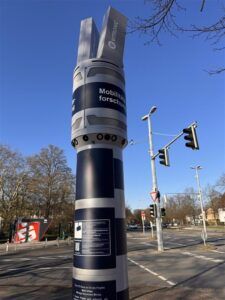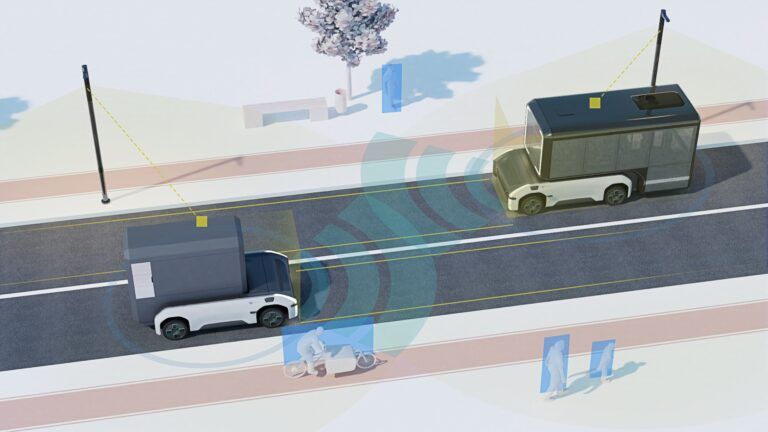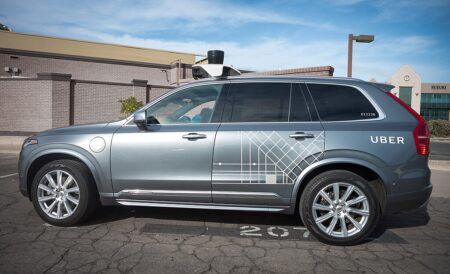Vitronic, a provider of machine vision solutions, has announced the launch of the world’s first research project for the holistic remote control of vehicles using intelligent infrastructure to help shape the future of automated driving in urban areas.
The project, called MAD (Managed Automated Driving) Urban, is being undertaken alongside the German Aerospace Center (DLR), and other partners, at Tostmannplatz in the north of Braunschweig, Germany.
The aim of the project is to demonstrate the feasibility of an infrastructure-supported automated driving concept in urban areas. MAD Urban is funded by the Federal Ministry of Economics and Climate Protection (BMWK).
Vehicle control via intelligent infrastructure
The MAD Urban project implements an innovative approach to vehicle automation. Instead of integrating automation functions in the vehicle, they are outsourced to the infrastructure, to edge and cloud systems. By continuously detecting all objects – on the road or at intersections – using infrastructure-based sensors, automated vehicles can be remotely controlled by appropriately equipped operating areas.
This not only increases the economic efficiency of autonomous driving, but above all the safety of all road users, as critical traffic situations can be detected at an early stage, Vitronic noted.
Tostmannplatz test field
At the beginning of April, Vitronic and DLR jointly installed two sensor columns at Tostmannplatz in Braunschweig to analyze traffic. The focus here is on high-performance detection systems based on stereo cameras, radar and LiDAR technology. These systems use AI to detect and classify road users and obstacles in real time with high precision, thus enabling a comprehensive traffic image – the basis for safe, connected driving. Personal data is not recorded or stored.
The recorded sensor data flows into a central data hub, where it is processed in real time. By continuously recording all objects in the intersection area, automated vehicles will be guided safely across the intersection during the test phase at Tostmannplatz.
“Stationary sensor technology significantly increases road safety: it detects areas over a large area and from multiple angles, even where vehicle-integrated systems reach their limits,” said Richard Werner, project manager for promotion and research projects at Vitronic Machine Vision Group.
“For example, concealed road users are detected reliably and at an early stage – before they even enter the field of vision or sensor range of a vehicle. This makes it possible to anticipate and avoid potential hazards – an important building block for greater road safety and a key contribution to Vision Zero,” Werner added.
The test project in Braunschweig is the first of its kind in the world in which the complete control of vehicles by road technology is to be tested, according to Vitronic. The research team has set itself the long-term goal of transforming the project solutions into marketable products and industrial applications, particularly for a smart infrastructure.
New column in use
 For Vitronic, the MAD Urban research project at Tostmannplatz is associated with an additional world premiere – a new generation of columns is being used for the first time in the project with stereo optical sensor technology. The robust, weatherproof and urban space-friendly housing can be used flexibly thanks to its modular construction. The choice of materials, production and energy consumption have all been sustainably optimized in line with the principles of green engineering.
For Vitronic, the MAD Urban research project at Tostmannplatz is associated with an additional world premiere – a new generation of columns is being used for the first time in the project with stereo optical sensor technology. The robust, weatherproof and urban space-friendly housing can be used flexibly thanks to its modular construction. The choice of materials, production and energy consumption have all been sustainably optimized in line with the principles of green engineering.
The official market launch of the latest Vitronic housing generation is planned for the end of 2025/start of 2026.
In addition to DLR as consortium leader and Vitronic, other companies and research institutions are involved in MAD Urban, such as the Research Center for Information Technology (FZI) in Karlsruhe, Intel, GFT, Balluff and the city of Braunschweig. The traffic research at Tostmannplatz will run until the end of September 2025.





